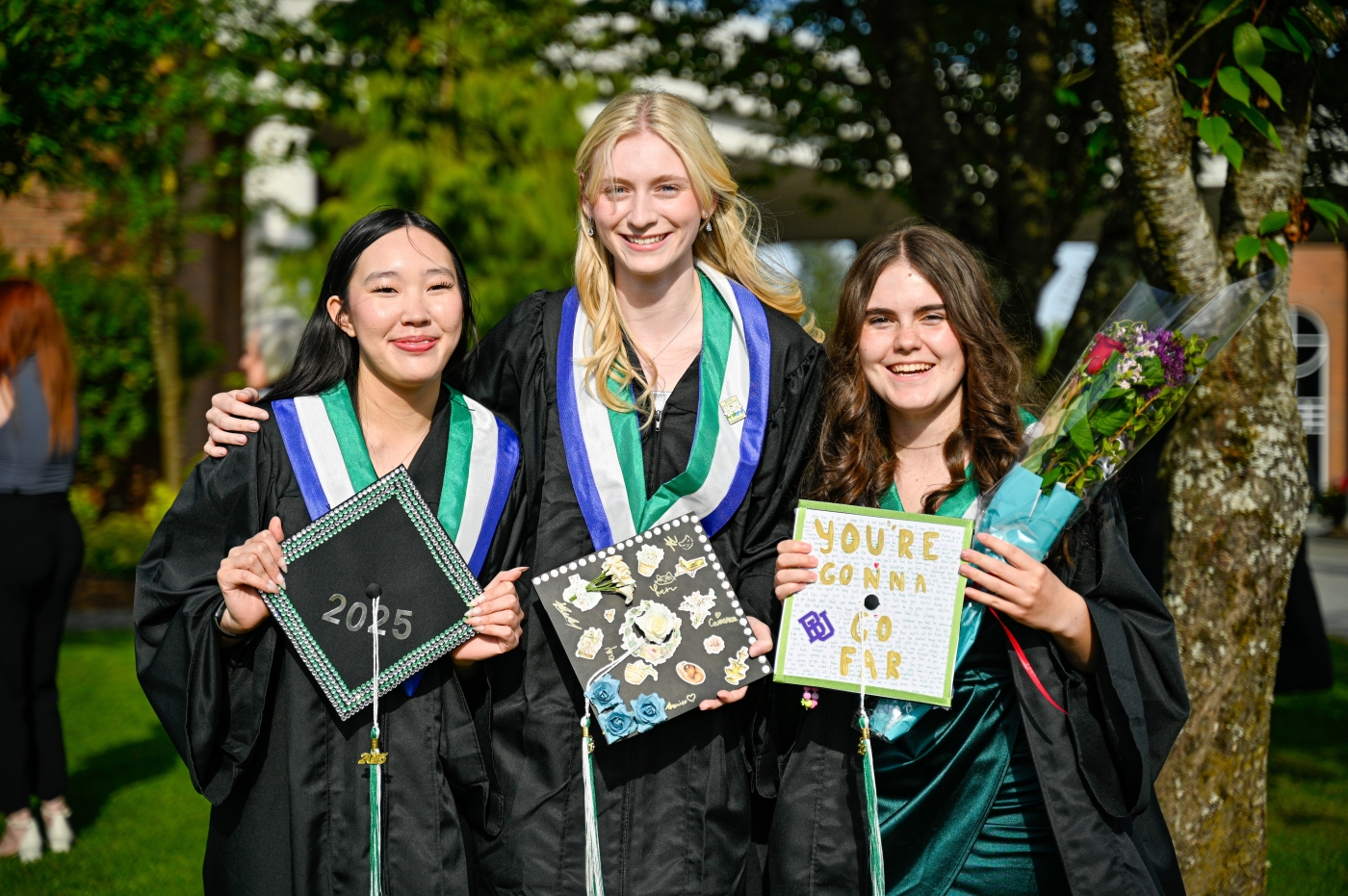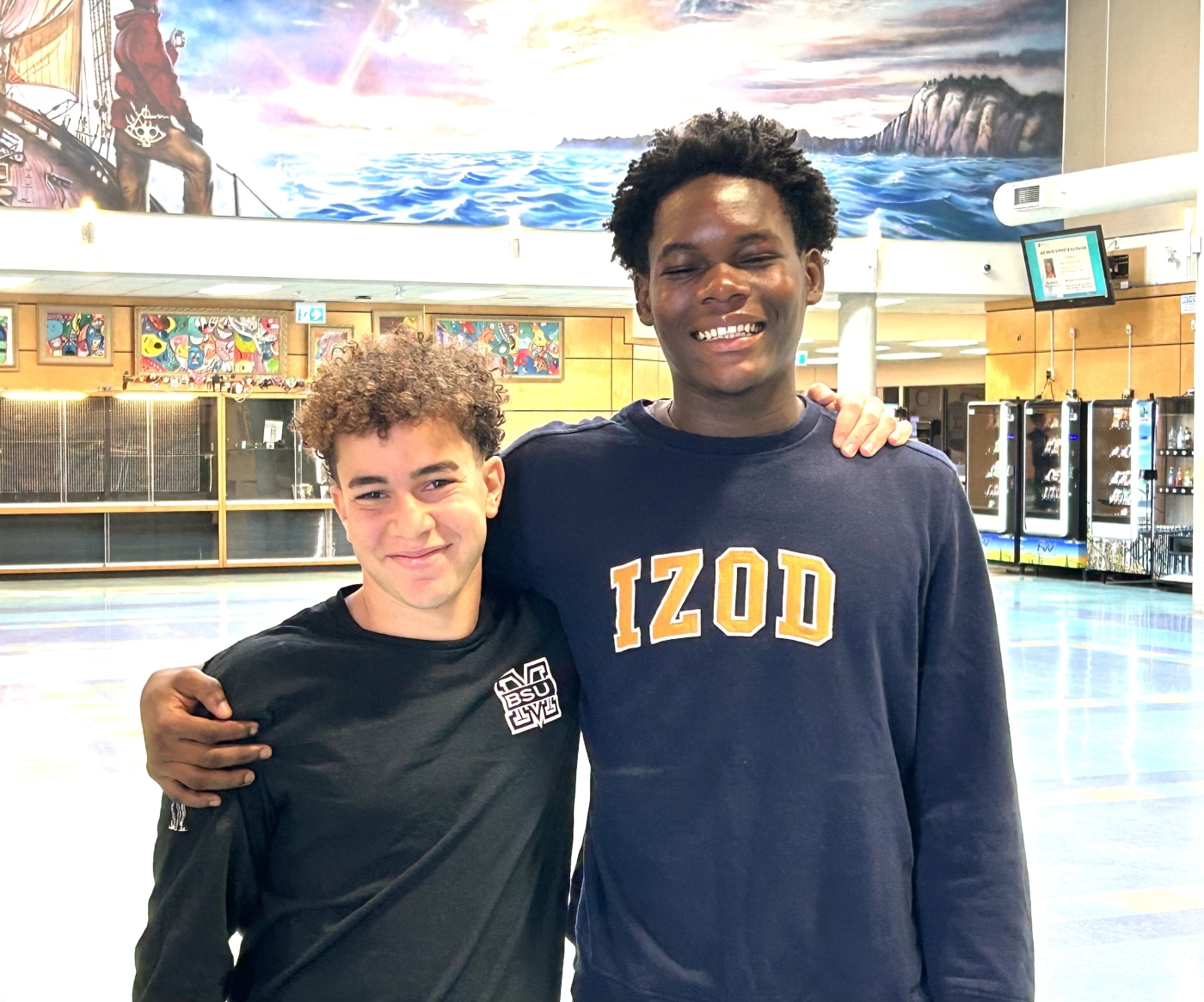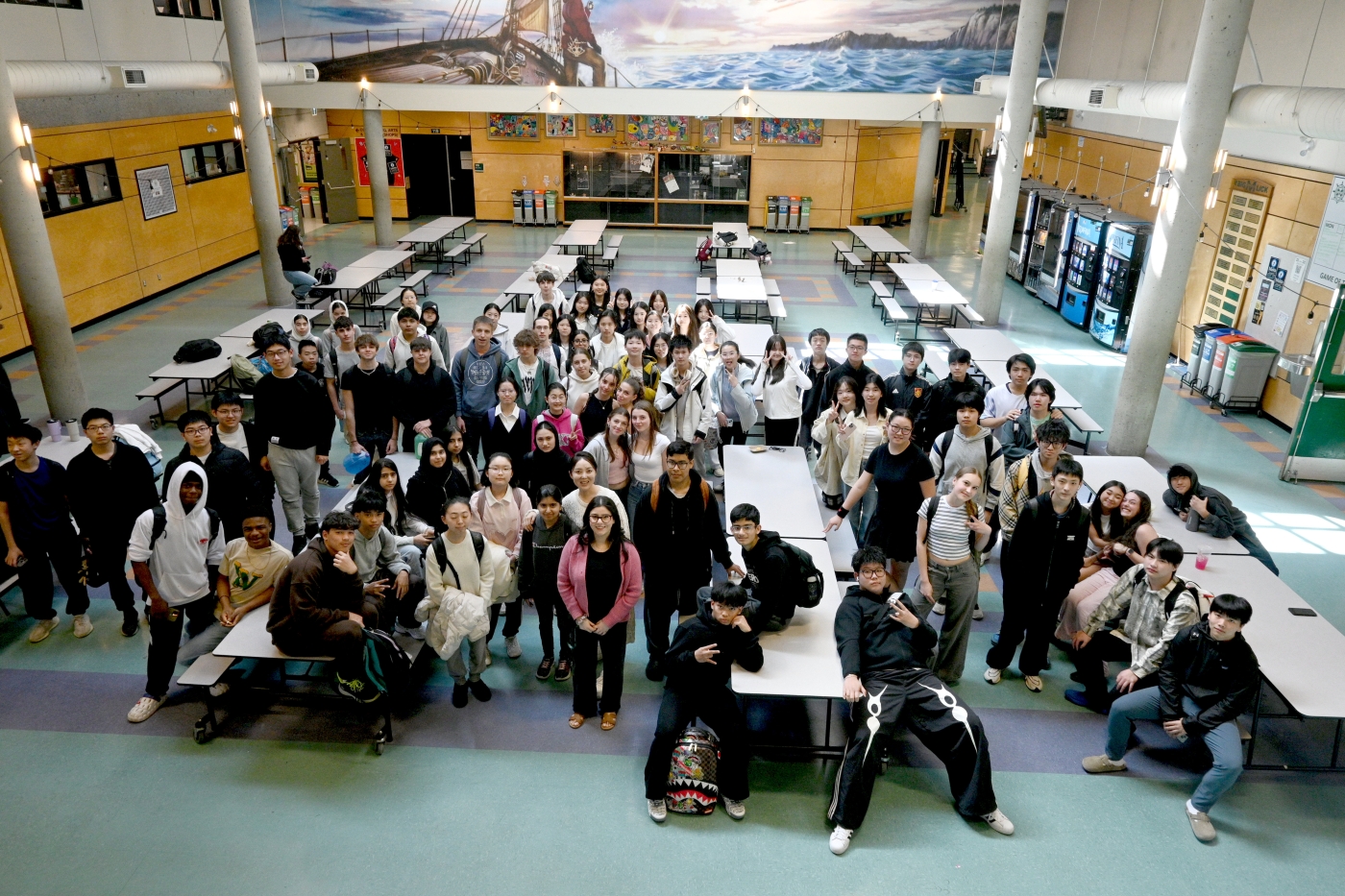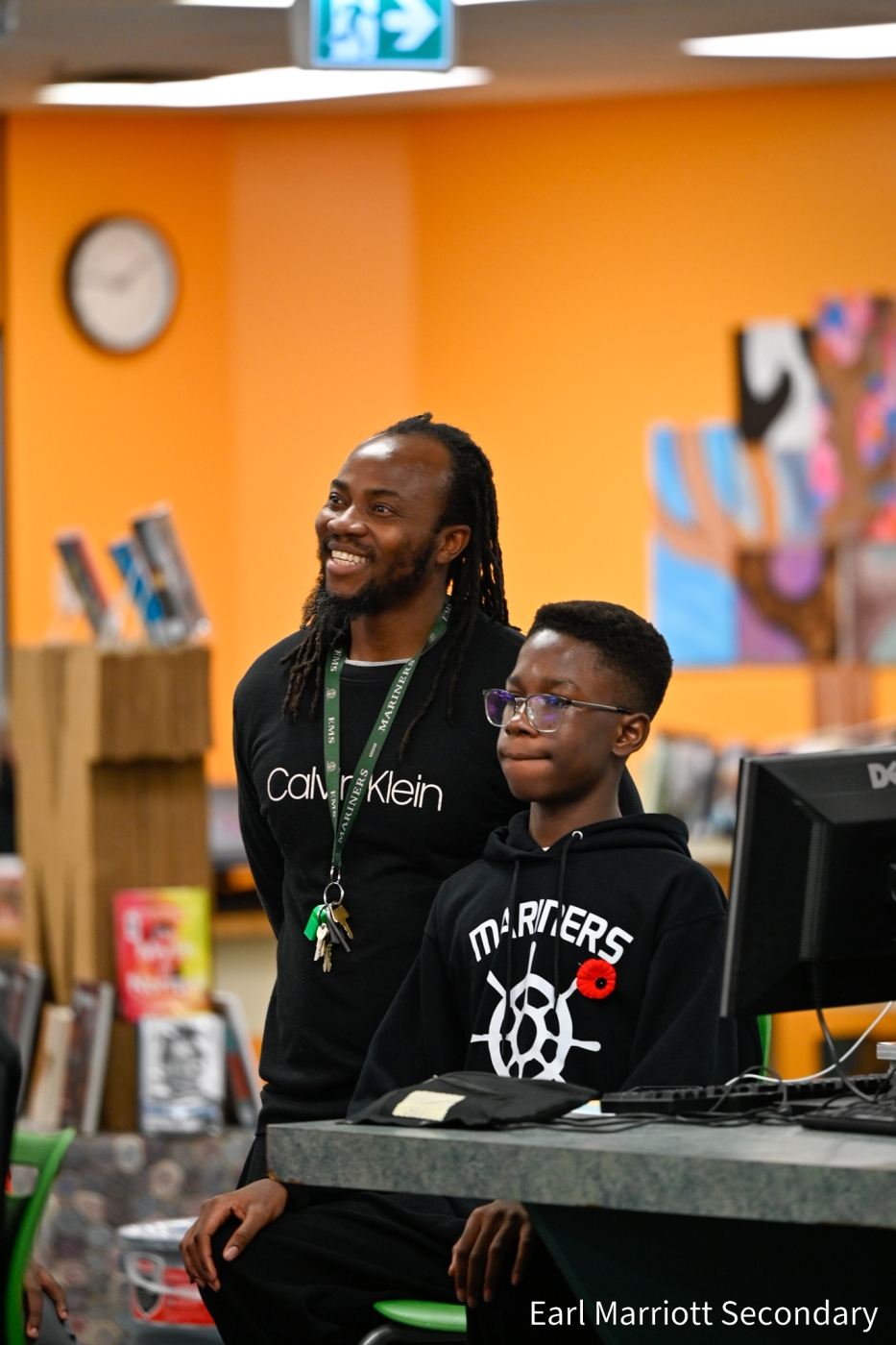Earl Marriott Secondary 24-25


OUR CONTEXT
École Earl Marriott Secondary is a thriving learning community located in South Surrey, BC. First opened in 1973, Earl Marriott is a hub for academics, athletics, applied skills and performing arts. As enrolment grew rapidly in South Surrey, Earl Marriott grew in both size and structure. With the recent opening of a new Secondary School in South Surrey, Earl Marriott now enjoys increased space to learn and grow.

Today, Earl Marriott Secondary maintains a varied program of rigorous academic, fine and performing arts, technology education, special education, and athletics. Earl Marriott offers a number of co-op experiences for its students through an active Careers department. EMS currently fields the most athletic teams in the District and are frequently ranked provincially in Girls Volleyball and Soccer, Boys Rugby, and Curling . This year we were fortunate to host the Senior Girls Volleyball Provincial Championships.
Earl Marriott enjoys a close connection with the Semiahmoo First Nation. There is a rich history and tradition of collaboration with the First Nations community. Elders from our community are invited in regularly to share with our students their story, culture and history, this culminates in out Indigenous Elder in Residence Week. Also, students and staff from EMS collaborate with leaders from the Semiahmoo people to organize and run an Annual Pow Wow. This event has become the central cultural event of our school year.

Our school has the largest secondary french immersion program in BC with almost 400 students which is almost a third of our population. These students come to us from four local elementary schools as well as from french immersion programs in other parts of Surrey. These students avidly participate in our school band and leadership programs.
OUR LEARNERS
As a staff, we recognize that our learners have changed from years past and that the challenges they will face in society have changed also. Our learners come from a variety of backgrounds and experiences, and they bring with them diverse learning needs and cultural perspectives. Our learners understand that learning requires an exploration of one’s own identity. Our learners understand that we need to acknowledge everyone’s history and story through a wide cultural and diverse representation in our curriculum and school culture. Learning is embedded in memory, history and story, and that is inclusive of everyone’s story.
Our staff has been actively engaged in implementing the curricular and core competencies, and developing our skills in universal design for learning. We recognize that to prepare our students for the future we need to embed the priority practices of the First Peoples Principles of Learning in our curriculum and assessment practices. Or learners have engaged in learning that weaves a diverse cultural background and shared story through the curriculum.
Earl Marriott students come from a wide variety of backgrounds and schooling experiences. 23% of students’ primary language spoken at home is not English. There are 34 home languages other than English represented by our students and their families. 5% of Earl Marriott students are given services as English Language Learners (ELL). 16% are special education learners designated with social/emotional, physical/health and/or learning needs; 5% are Aboriginal learners; 30% of students are in the French Immersion program.
OUR FOCUS
Our school continues to focus on amplifying a positive school culture that embraces and celebrates equity, diversity and inclusion. It is a long term commitment that began last year and will likely bring non-linear progress. It strongly aligns with the need to improve awareness and understanding of the various cultures and beliefs of our diverse students. To work on this, staff and students continue to work in three broad areas. Last year, we invested time in building staff awareness and skills in anti-racism education and culturally responsive pedagogy.
This year, we have began a staff antiracism committee. This group has met to do three things. First, they are counsel and provide advice to administration in responding to racist incidents and developing proactive practices. Second, the committee advises on necessary changes that need to be made to improve the anti-racism approach of school policies and practice. Last, the committee makes recommendations about continuing antiracism education of students and staff at the school. This committee is well participated in. Meetings routinely draw 10-15 staff for discussions.
This was coupled with work by staff at staff meetings examining scenarios of racism in the hallways and classrooms that parallels real life situations experienced at EMS. The staff used the district guide to responding to racism as a tool to shape decision making.
We continue to ramp up various cultural celebrations throughout the year, using the district Equity, Diversity and Belonging calendar to guide us. Students also engaged in some Racism and Bias learning during the course competency assemblies that they used to reflect on their own growth in this area.
And, we continue to work to provide opportunities for diverse student voices to be centred in our school community. This year we had multiple sessions to seek the opinions and feedback of racialized students in the school.
Students from the Student Advisory Group were again conferred with to discuss progress on antiracist efforts. This select group made up of 15 students from across school programs and grades was created with goal of hearing from a variety of BIPOC voices. Students met monthly to provide feedback to the Principal on issues that were important to them, including school structures and processes, as well as racism and climate. Several students expressed that the growth of acknowledgement of other cultural events and the celebration of different groups has made the school more welcoming. Though it was commented by a number of students that while there was more acknowledgement and celebration, some still weren't comfortable expressing themselves or standing out as different, given the lack of students that share their culture. They indicated that they ultimately didn't want to stand out and draw attention to themselves.


Consultation sessions were also conducted with our Asian international ELL students and our Black Student Union. Students in both groups celebrated EMS' commitment to building safe spaces and having staff that they could connect with if they fell threatened or unsupported. However both groups also expressed being exposed to racism by fellow students. As an example, when polled, 80% of our International students stated that they had been made fun of at some point at EMS because of their spoken english accent. 67% percent felt that they had witnessed a classmate being excluded because of their ethnicity.


The continued engagement of our Black Student Union with others from the south end secondary schools offers a vital example of our students finding a voice and increasing their engagement in the school and their studies. One graduating member of the BSU joined one of our International ELL students in demonstrating their new confidence and finding places in the District trades programs.

Staff members Michael Musherure and Chris Nwandu, supported by the District Department of Racial Equity, made sure students were able to share experiences, brainstorm new opportunities and celebrate black joy with other black students

The relationship between these efforts and academic learning is loosely coupled. If more students in our EMS school community feel that their culture, beliefs and identity are valued and can contribute, they are more likely to feel comfortable in classes, engage more in learning, and achieve more. Also, if a broad range of students are exposed to a greater variety of values, beliefs and perspectives, they are more likely to consider social issues, academic problems, and creative endeavours from differing viewpoints. This too is likely to make for deeper learning.
Additionally, student core competencies of communication, critical and creative thinking, and personal and social responsibility are likely to be directly improved by efforts in this area.
OUR NEXT STEPS
In the school year to come, EMS must maintain focus on recognizing the diversity in our school community as well as Surrey and White Rock more broadly. This year's efforts to provide education, increase understanding of cultural beliefs and practices, and amplify BIPOC student voices had a positive effect on student culture.
Next steps:
1. Antiracism staff committee- Continue to grow participation and activity of this group. Expand it's role to coaching staff learning and awareness
2. Continue to Amplify diverse voices in the school- Through the Student Multicultural Committee, Student Advisory Group and other structures, EMS will find more ways to share a variety of cultural learnings and celebrate diverse student voices.
3. Continue to focus on ways to seek student feedback around school culture and progress in core competency areas- Structures such as the Student Advisory Group, the BSU, and International Student Forum,, as well as surveys done through student grade Teams, and student Core Competency reflections. This feedback can help determine if different interventions are working to improve the school culture of learning.
4. Dive in and continue to monitor measurables of success for diverse students- EMS will continue to examine the graduation rate for our Indigenous students as compared to our overall success rate and that of the District. Additionally, the graduation rate for BIPOC students and their engagement in student co-curricular activities such as leadership, service and academic clubs, and student committee's could provide valuable information on whether efforts to build comfort and amplify voices are working.
